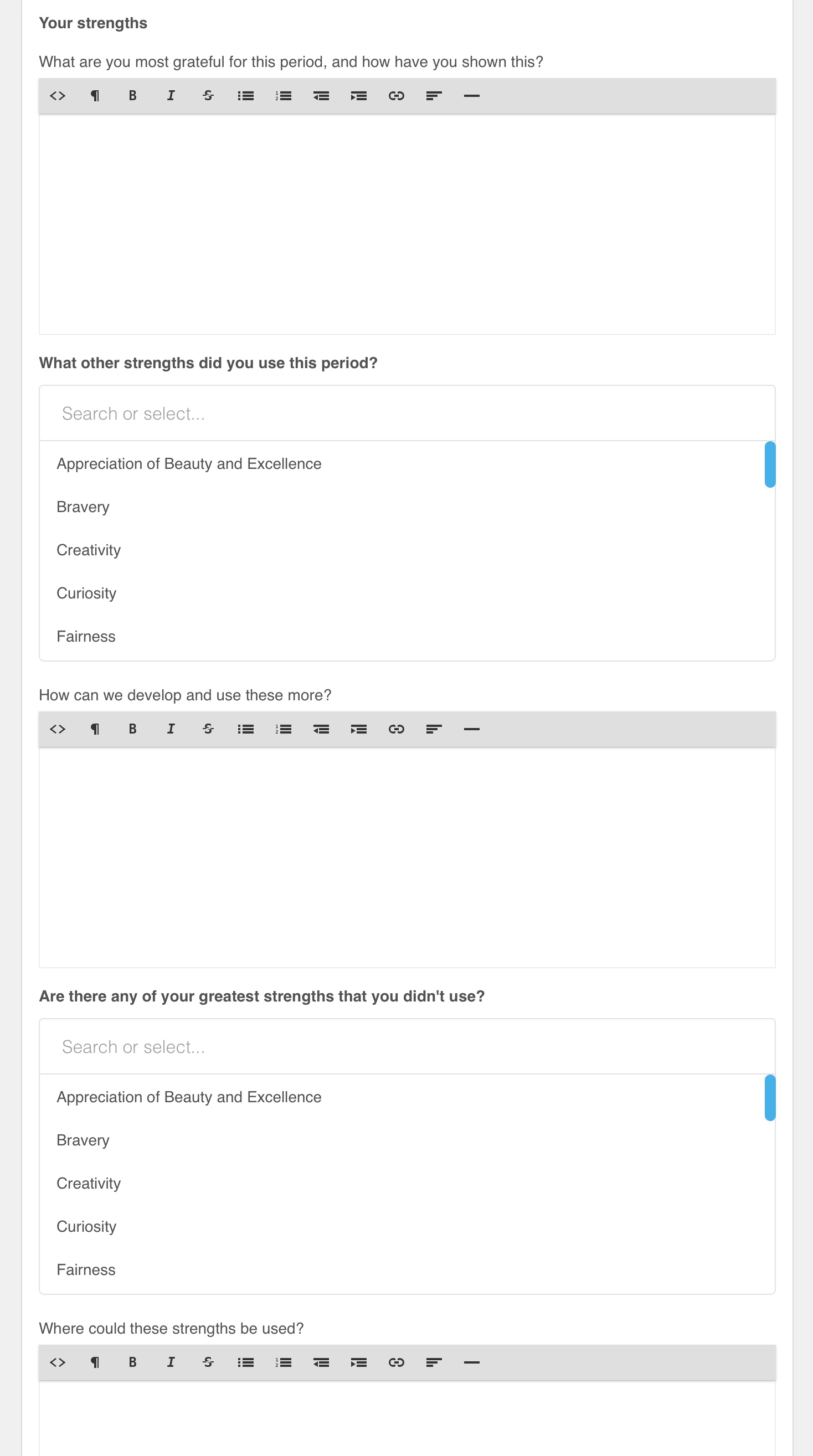
Leading versus managing in your employee 1:1’s
When you’re investing in employee check-ins and 1:1 conversations it’s important to keep the check-in true to being a coaching conversation about the person, and not a management conversations about the work.
Of course there is an overlap, since the check-in is about enabling the employee to do their best work every day, and by aiming for that in a 1:1 versus a project meeting we need to focus on their direction, their strengths and their learning needs and look forward not back in order for them to succeed.
We see the most effective process being a mix of reflective practice (by the employee) and enablement by the leader using a self-assessment to prepare for the 1:1 meeting.
Employee self-assessment
The structure of the self-assessment needs to fit the culture, circumstances and constraints, and nature of the role, so a one-size-fits-all template is not always appropriate. However, we suggest the following as a useful baseline to adapt from
Purpose
The first aspect of the check-in is to ensure alignment. What is the employee’s purpose (their why?, priority, objective, or mission). How is this aligned with the needs of the organisation? How do they define success? How do they feel about progress?
A simple set of questions around that can reveal a lot.

Asking the employee their progress and next actions will often highlight if there is an optimistic or fatalistic outlook towards achievement, or a fixed or growth mindset with regard to options.
Specifically prompting the employee to signal that they need help gives the opportunity for assistance without any stigma or reputation risk.
This format above is a short form of the GROW coaching model, which could be used here instead.
Measures
Most organisations use some form of performance measurement, be that Goals, KPI’s, OKR’s or other metrics.
Having the employee enter their actual performance against their goals each month reinforces a sense of progress, or a need to improve performance, without that being a judgement.

Using the concept of ‘low water marks’ the onus is on each employee to continuously improve their personal best performance, and not become complacent to simply meet a target.
The best next actions demonstrate the degree to which each employee is thinking creatively, bringing ideas and not simply coasting. Often this creates an opportunity to negotiate for resources and reframe commitments ... ‘if you give me this (for example extra headcount), I’ll deliver that (extra revenue, say)’.
With a monthly check-in cadence the effectiveness of best next actions can be gauged quickly.
Strengths
The job of the leader is to know the strengths of their people, to further develop them, and to apply them to best effect.
People leave (or become presentees) when they feel that their strengths are not acknowledged or are wasted.
The best way for leaders to know if they are getting the application of strengths right is to ask.

Focusing on the top 6-8 personal strengths the leader should ensure that each employee feels appreciated for their strengths, and included in opportunities specifically because of the strength they bring to that situation.
In our check-in we single out ‘gratitude’ as a strength for everyone to develop. That’s because we’ve decided that in our workplace gratitude is non-negotiable. You might have other non-negotiables in your workplace or none at all.
We’ve found that a common language is useful when developing strengths. In this example we’re using the VIA Institute of Character language. Other clients use Clifton Strengths, DISC or MBTI to assist their employees with strength finding, and personal growth.
Learning
The assistance a leader must provide often comes in the form of enabling learning in all of its forms; classroom, eLearning, on-the-job training, and also permission to make and learn from mistakes, to experiment, to innovate, to network and learn from others.
We need workers to know that learning is expected, and we want as much as possible for that to be self-directed.

Having employees reflect on what they learned and valued reinforces engagement and belonging.
It also gives the leader cues for the types of future learning that could be most rewarding for the employee.
Prompting for learning intentions gives the leader the opportunity to provide appropriate resources to enable the employee to fulfil their intentions rapidly. This fuels the feedback-learning continuum that leads to outstanding performance.
Performance Enablement
Commitment
As a result of walking through the self-assessment in a 1:1 check-in meeting, both the employee and the leader will be aiming towards some short term commitments for performance achievement.
in the case of the employee, it is commitment to best next actions.
in the case of the leader, it is commitment to utilisation of strengths, provision of learning and assistance to outperform on goals and purpose.
The suggested cadence of 1:1 check-ins is once per month which means commitments are going to be made in small increments not giant leaps. This is helpful in keeping things within the sphere of control of the employee and the leader and minimising room for excuses or failed commitments.
A critical aspect of agile work practices is that commitments can be relied upon, otherwise your 2nd, 3rd, and 4th check-ins are going to devolve into excuses.
A month goes by very quickly, so act on the actions as quickly as possible following the check-in to provide the best conditions for success.
What are your check-in practices? Let us know in the comments.